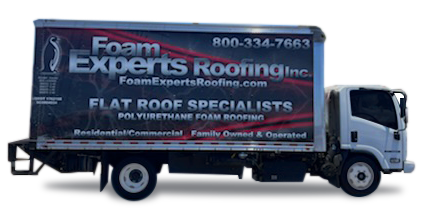Trees can certainly add beauty and value to any commercial property in Phoenix, Tucson, Mesa, or any of the surrounding areas. Trees become a potential problem, however, when branches land on a foam roof. While roofs covered with this type of material are generally well-protected, polyurethane foam roofing is also susceptible to damage from tree-related debris. Fortunately, there are three things you can do to reduce your risk of experiencing holes or tears that could contribute to leaks and other issues.
1. Trim Your Trees
Roofing contractors typically recommend trimming all trees within six feet of a roof. When having your trees trimmed, also make sure any branches that are already dead, decaying, or damaged are also removed. The Arbor Day Foundation recommends pruning and trimming trees in the late and winter when they are dormant. However, if you want to slow or direct the growth of certain branches that may get too close to your foam roof over the summer, trim or prune after seasonal growth is complete.
2. Replace Weak or Damaged Trees
If you’re like most busy business owners in Arizona, you probably don’t have “replace trees” at the top of your to-do list. However, by being mindful of the health and general condition of the trees on your property, you may be able to mitigate risks from trees more susceptible to falling or having branches dislodged. Pay particular attention to trees that are showing signs of age-related wear, disease, or insect damage. When planting new trees on your commercial property, smaller trees should be planted about 8-10 feet from your building, and larger ones should be planted about 20 feet away.
3. Remove Leaves and Other ‘Tree Clutter’
Lastly, periodically sweep your foam roof to remove accumulated leaves and other minor “tree clutter” that tends to gather as seasons change. The reason for taking this step is to make it easier to spot potential signs of damage that may be hidden by leaves and other debris. Also, accumulated leaves may affect the flow of water on a flat roof or create opportunities for puddles to form after heavy rains. Ponding is one of the top causes of commercial roof damage.
The National Storm Damage Center estimates that trees damaged from storms cause more than $1 billion in property damage each year. Even if you’ve taken the precautions discussed here, be proactive after a storm and do a visual inspection of your AZ foam roof. Strong winds can sometimes dislodge branches from trees on other areas of your property, or even ones from nearby trees on adjacent streets or properties. If you spot punctures, call on roofing professionals to repair your foam roof as soon as possible.















